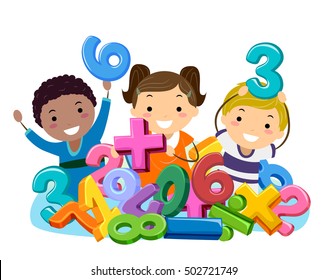Maths
National Curriculum
Purpose of study
Mathematics is a creative and highly inter-connected discipline that has been developed
over centuries, providing the solution to some of history’s most intriguing problems. It is
essential to everyday life, critical to science, technology and engineering, and necessary
for financial literacy and most forms of employment. A high-quality mathematics education
therefore provides a foundation for understanding the world, the ability to reason
mathematically, an appreciation of the beauty and power of mathematics, and a sense of
enjoyment and curiosity about the subject.
Aims
The national curriculum for mathematics aims to ensure that all pupils:
? become fluent in the fundamentals of mathematics, including through varied and
frequent practice with increasingly complex problems over time, so that pupils develop
conceptual understanding and the ability to recall and apply knowledge rapidly and
accurately.
? reason mathematically by following a line of enquiry, conjecturing relationships and
generalisations, and developing an argument, justification or proof using mathematical
language
? can solve problems by applying their mathematics to a variety of routine and nonroutine problems with increasing sophistication, including breaking down problems into
a series of simpler steps and persevering in seeking solutions.

In Year 1 at St Julie
At St Julie's we believe that maths is very important in our everyday life. To help the children become more confident with key skills in Year 1 we provide oppotunties for the chidlren to investigate and learn about number, money, time, length, weight, capacity, position, direction and shape. This is done through a range of taught lessons and play based acitivities.
To support your child at home try the following activities: learn to tell the time, find out about coin values by playing shopping, help to weigh out ingredients if you are cooking, use a ruler to measure in centimetres, draw pictures of flat shapes and go on a solid shape hunt around your house. Play games like dominoes, bingo, snakes and ladders but most importantly have fun.
In Year 1 we are learning to add and subtract facts within 10, then 20. These number bonds will help the children with many elements of their maths and will be used by the children throught the mathematical work. In the Spring and Summer term the children are encouraged to reinofrce their knowldge of number bonds at home using the Numbots programme as part of their weekly homework (logins for this will be sent out before Christmas).
Remember to use equipment such as counters
For example:
The whole number is 10.
Split (partition) the number into 2 parts.
10 = 4 + 6
10 = 6 + 4
Add the parts altogether to find the total.
4 + 6 = 10
6 + 4 = 10
There is a link with subtraction and this is the opposite of addition.
10 – 4 = 6
10 – 6 = 4
We also use partitioning to learn about place value splitting the tens and ones part of the whole number.
13 = 10 + 3
10 + 3 = 13
Year 1 also learn to count in multiples of 2’s 5’s and 10’s counting forwards and backwards in sequences.
Topmarks is a website with fun games to reinforce these concepts. Click here to go to Topmarks
 St Julie's Catholic Primary School
St Julie's Catholic Primary School